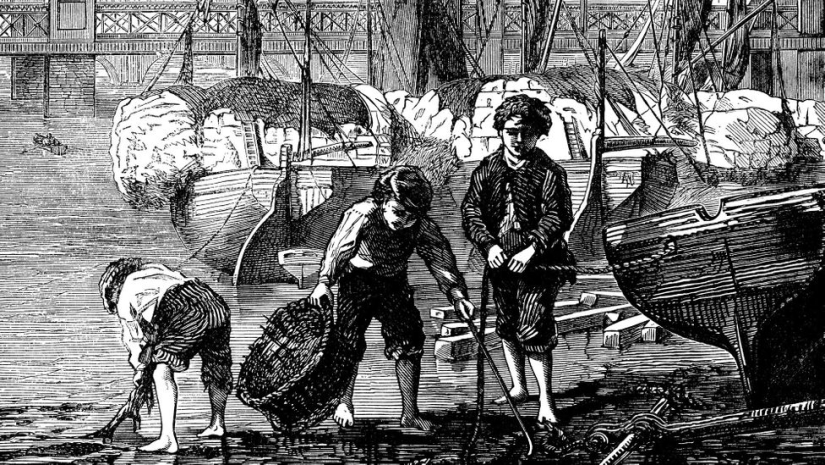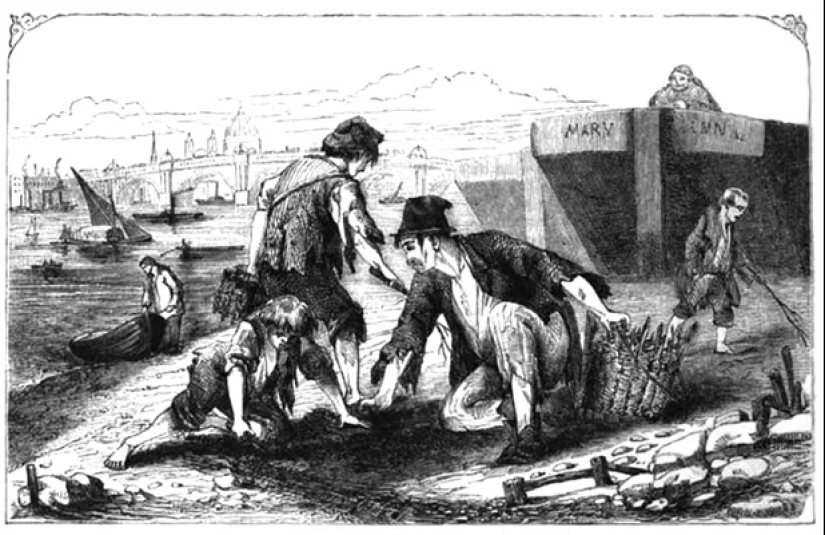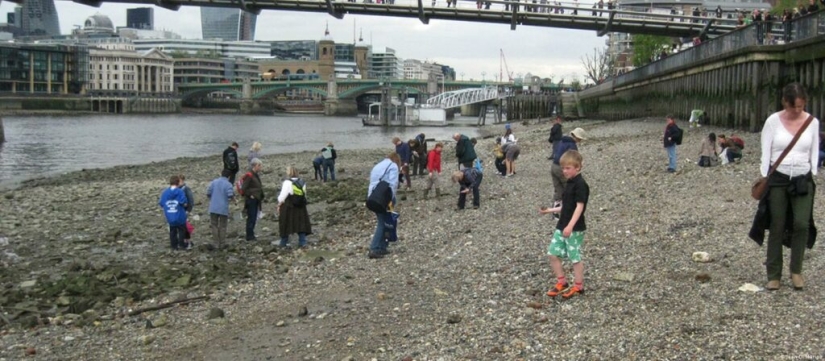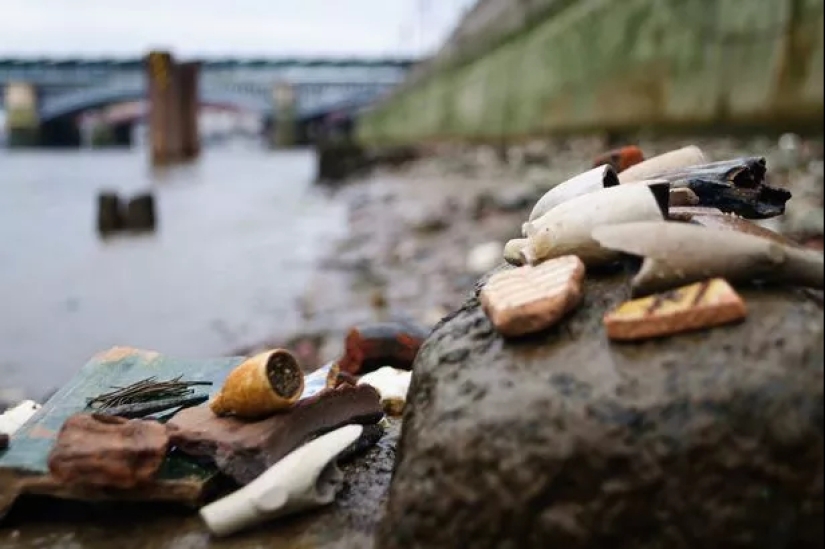Who are madlarks and what do they look for in the mud on the banks of the Thames?
Categories: Europe | History | Society
By Pictolic https://pictolic.com/article/who-are-madlarks-and-what-do-they-look-for-in-the-mud-on-the-banks-of-the-thames.htmlThe River Thames, which crosses the British capital, preserves the history of London since its founding by the Romans. The waterway was used as a route to the sea, a source of food, and also as a garbage dump. Therefore, the banks and bottom of the Thames hide many secrets that haunt archaeologists and... madlarks. Who are they and what are they looking for while digging through tons of dirt, debris and silt?

The Thames cuts London from west to east, winding between neighborhoods and old docks. Sea tides have a serious impact on the river, lowering the water level twice a day. During these hours, the bottom is partially exposed and with it thousands of years of London history. And the time comes for the madlarks, who dot the banks of the Thames in search of treasure.

The first mention of madlarks was recorded in documents of the 18th century, and their heyday came in the Victorian era. This was the name given to the London beggars who combed the banks of the river in search of valuable items to sell. It was an unpleasant and dangerous task. Waste was poured and dumped into the Thames for centuries, and the river looked like a real cesspool.

It was very easy to get a cut by bumping into glass or a piece of metal, and the medicine of the 18th and 19th centuries did not know how to deal with blood poisoning. However, the madlarks did not have the money to pay for the services of a doctor - when they got sick, they simply died. But the relatively easy income made the poor forget about the mortal danger.

At the beginning of the 20th century, the contingent swarming around the water changed. The beggars were replaced by London schoolchildren. They made money by asking passers-by to throw change into the mud. As soon as the coin sank into the stinking slurry, the children ran a race through the mud in order to have time to take possession of the money. Children and teenagers fell down, getting dirty from head to toe, and often got into fights for the amusement of the public.
Of course, all this is a thing of the distant past. Today's London Mudlarks are amateur archaeologists who take their hobby seriously. In London there is a community of people involved in this business and it has several thousand members. It was founded in the late 1970s and called the Thames Mudlark Society.

Mudlarks are people who are seriously interested in archeology, with special equipment and a license. Yes, just anyone cannot search for artifacts in the Thames - to do this, you need to obtain permission from the city authorities. Although this rule is constantly violated and for every madlark with a license there are a dozen “black archaeologists”.

In 2019, when licenses first began to be issued, 200 people applied for them. In 2023, there were already more than 5 thousand search engines with documents.

The Port of London Authority (PLA) has now suspended the issuance of permits. A survey of the banks of the Thames showed that active excavations by mudlarks are causing serious damage to the coastal zone. Therefore, now the number of “diggers” is growing due to illegal immigrants, who are regularly caught and fined by the police.
The main tools of the Madlarks are shovels, scoops, sieves and metal detectors. There are different search methods used. Some people look for artifacts on the surface of the silt, some dig deep holes, revealing cultural layers, and many simply sift through the mud.

The main prey of madlarks is Roman and medieval coins, fragments of ceramics, buttons and cigarette holders.

But sometimes you come across very interesting finds, such as ancient jewelry and badges of medieval pilgrims. Madlarks demonstrate their prey in specially created groups on social networks and forums.

The activities of enthusiasts are strictly regulated by law. If a madlark finds an item that may be of historical value, he is required to report it to the authorities.

The items are sent for examination to scientists from the British Museum. If they are valuable, they are confiscated. But it’s no secret that searchers put up most interesting finds for sale. Desperate antiquity seekers are not afraid even of strict British laws. In 2019, an archeology enthusiast was sentenced to 10 years in prison for misappropriating Viking Age treasure. He found it in the fields of Herefordshire and tried to sell it off piece by piece.

Once upon a time, madlarks were mostly men. In the 1980s and 90s, the share of women among them was only 5 percent. Now they are about half of the total. Not all people from the banks of the Thames come there to earn money. Many seek to satisfy their passion for archeology, which began in childhood. There are also those who are driven by more complex motives.

One of the most famous Mudlarks, historian Malcolm Russell, began a quest to distract himself after the death of a close friend. The search engrossed him so much that it became his main occupation. Russell even wrote a book, The Mudlarks: Hidden Stories from the River Thames. He is considered the main expert in this case. But besides this, the scientist claims that he simply enjoys the search process.
Recent articles

American artist Lee Price is sure that eating is a completely natural process, but many are ashamed of their attitude to food, ...

There is an unusual exhibit at the National Museum of Natural History in Washington. This is the skeleton of a man, on whose chest ...

A series of works by photographer Brian VILS from new York, dedicated to girls, sheltered the homeless and abandoned cats. 'brien ...